Quán này nổi tiếng về dimsum, đây là chi nhánh ở nhà hàng ở Thái. Nhà hàng chính bên Hong Kong được 1 sao Michelin, tụi mình thích lắm mà chưa có dịp đi ăn thử.
Địa chỉ:
Floor 3, Terminal 21, 288 Soi Sukhumvit 19, Khlong Toei Nuea, Watthana, Bangkok 10110, Thái Lan
Sau đây là 1 vài đánh giá của tụi mình:
Không gian: Tàu điện ngầm có 1 trạm dừng ngay trung tâm thương mại này luôn, nên rất dễ đi. Khi đi vào có 1 thang cuốn lên từng tầng và 1 thang cuốn lên thẳng tầng 3, nhìn bên tay trái là thấy nhà hàng.
Quán khá rộng, nhiều bàn, lượng khách lai rai, đi nhiều lần chưa thấy full bao giờ nên cũng thoải mái. Trang trí không có gì đặc biệt, sáng sủa, sạch sẽ. Bàn ngồi 2 người thì hơi nhỏ chút nhưng cũng ổn, không đến nỗi khó chịu.
Phục vụ:
Bình thường, món lên nhanh, liên tục.
Thực đơn:
Thực đơn khá đơn giản, chỉ có 1 tờ giấy A4 1 mặt. Sau đó quán phát thêm 1 tờ giấy để mình ghi số lượng món cần ăn như bên dưới (giống bên Din Tai Fung). Mình đi mấy lần thấy thực đơn không thay đổi nhiều, 1 số món yêu thích lâu lâu quay lại thì không thấy nữa.
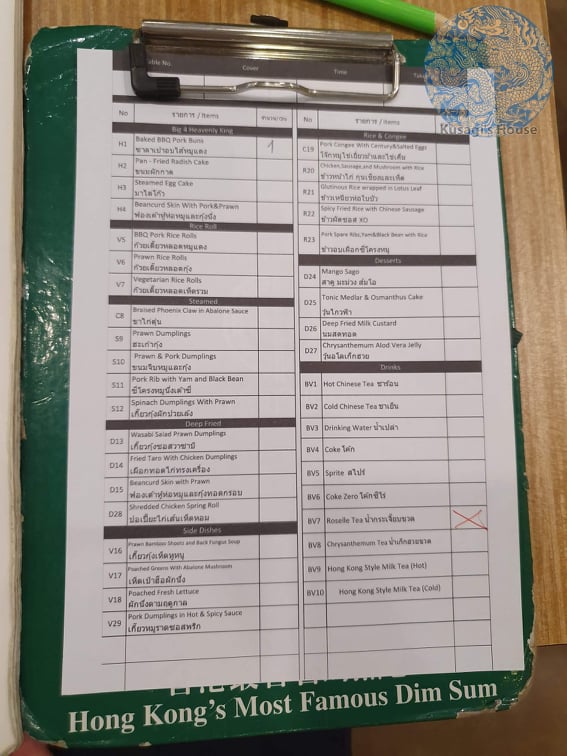
Món ăn:
Về thức uống mình từng uống thử nước lúa mạch và trà sữa ở đây. Mình thích vị trà sữa hơn, ngọt vừa, mùi trà thơm đậm, nước lúa mạch uống ngán ngán giống màu cháo, vị như sữa lợ lợ, không thích lắm.
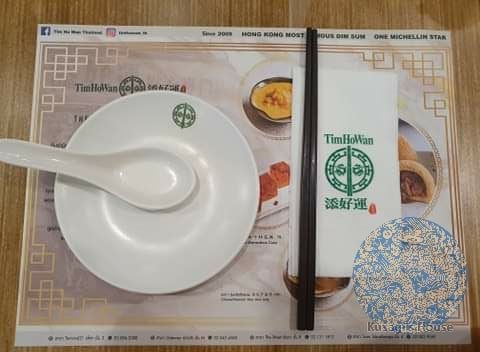

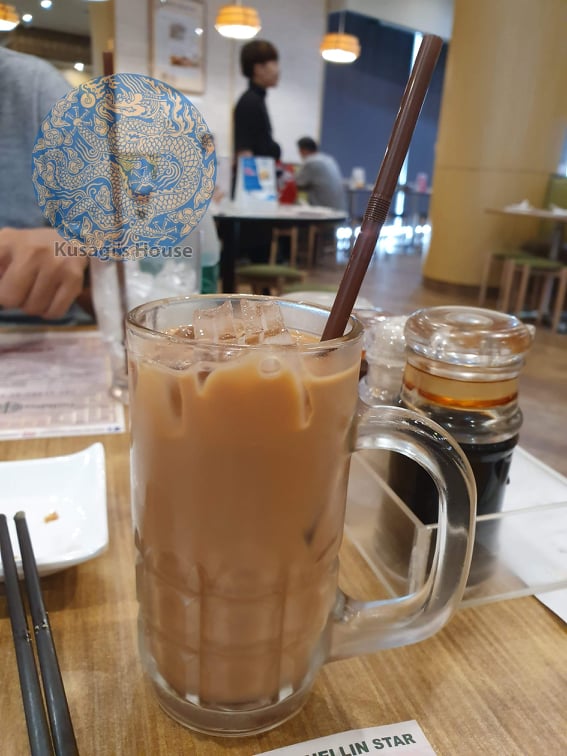
Milk Tea – 65B
Pork Buns: (bánh bao chiên): nhà hàng này có 1 số món signature, có dấu stick trên menu, món này hình như cũng là 1 trong số đó. Bột bánh béo, giòn rụm, bên trong sốt thịt đậm đà, mặn mặn, ngọt ngọt, thơm.

Pork Buns – 120B 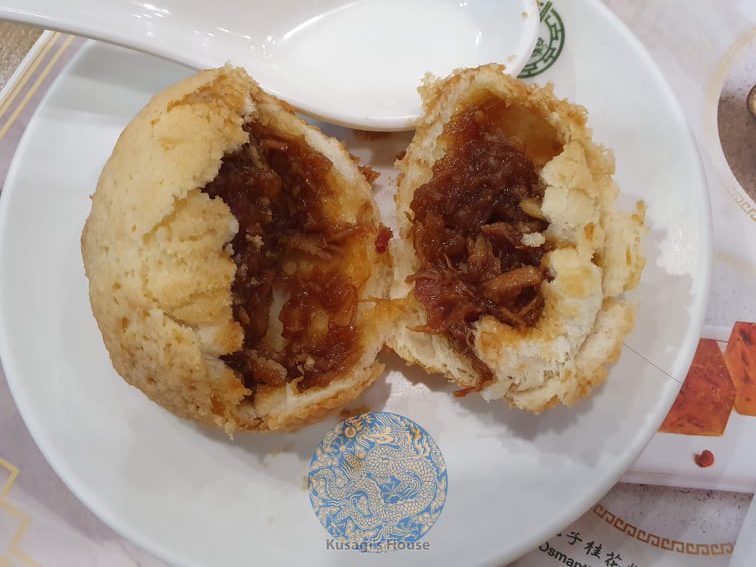
Sumai & Prawn Dumpling (Xíu mại tôm thịt và há cảo tôm): xíu mại tôm thịt nhìn hấp dẫn, ướp vừa miệng rồi, có thể chấm thêm 1 tí. Há cảo lớp bột mỏng, dẻo, tôm tươi, ăn như trôi tuột vô miệng.
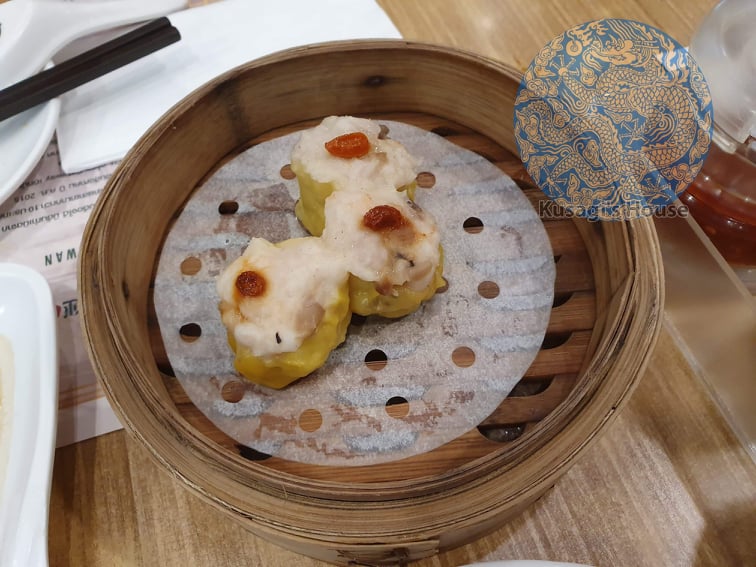
Sumai – 120B 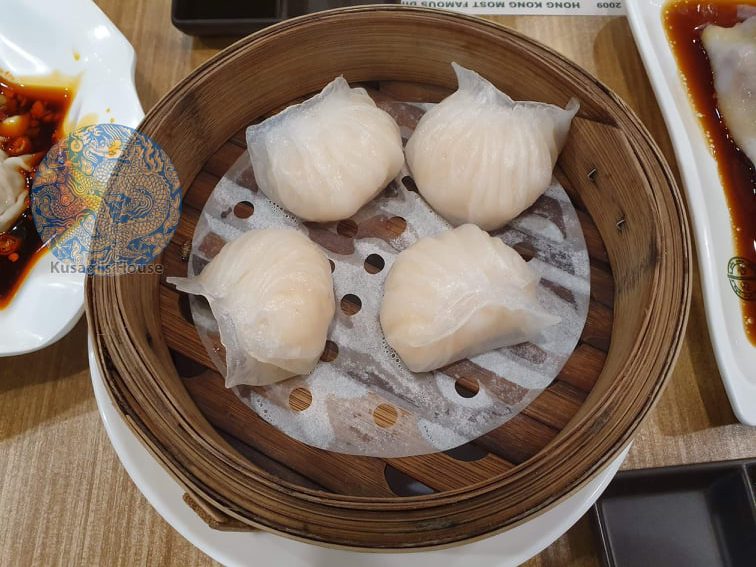
Prawn Dumpling – 130B
- Beancurd Skin with Pork & Prawn (Tàu hủ ky cuộn tôm thịt): mình thích tàu hủ ky nên gọi món này, cũng vẫn là tôm thịt lần này được cuộn trong tàu hũ ky chiên. Có chút giòn, chút béo, tôm tươi, dai, vị đậm.
- BBQ Pork Rice Rolls (Bánh ướt cuốn thịt heo): lúc trước có phiên bản cuốn gan, mình thích ăn hơn, giờ quán bỏ món này rồi. Công nhận lớp bột tráng ở đây mướt, mỏng vừa phải nên ăn ngon. Sau khi bưng ra nhân viên đổ nước sốt lên nên còn nóng hổi, sốt có pha chút vị giấm chua chua.
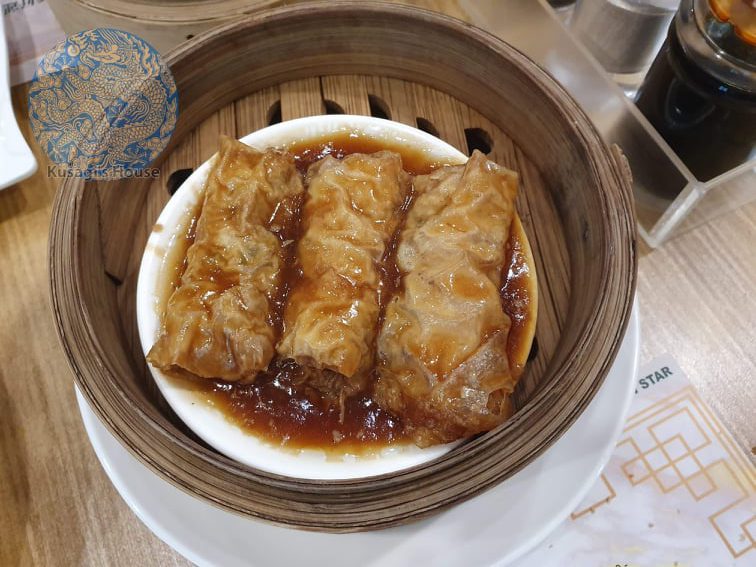
Beancurd Skin with Pork & Prawn – 120B 
BBQ Pork Rice Rolls – 130B
Pork Dumpling in Hot & Spicy Sauce (Hoành thánh ăn kèm sốt Tứ Xuyên): món trên ăn há cảo tôm hấp rồi nên món này mình chọn hoành thánh thịt heo. Món này ăn kèm sốt chua cay Tứ Xuyên, khá thấm, sốt Tứ Xuyên ở đây ăn được, chủ yếu mình muốn ăn thử món này ở đây.
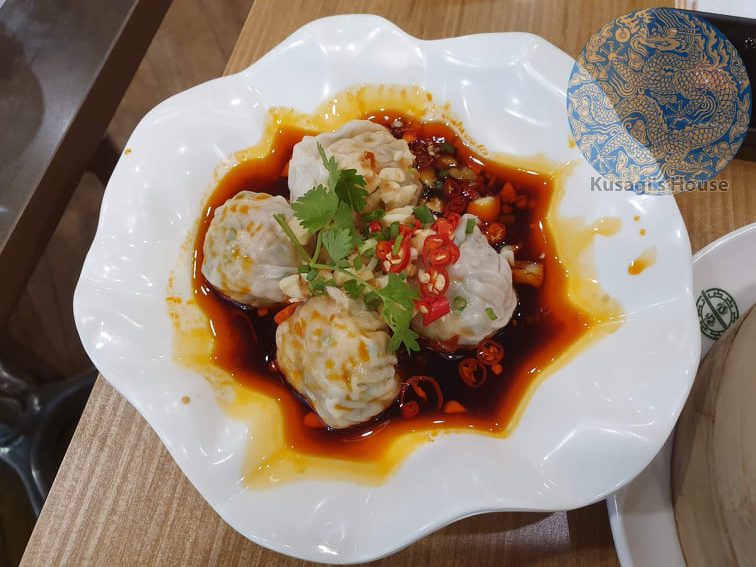
Mango Sago (chè xoài với bưởi): chè được bỏ trong tủ lạnh cho mát rồi dọn ra, không kèm đá. Ăn mát, vị ngọt ngọt, có chút xác bưởi đắng đắng, màu tươi, đẹp, ngon.

Giá cả: nếu so với những quán Dimsum ngon ở VN thì giá này quá hợp lý, thậm chí còn rẻ hơn. Ăn no căng, chất lượng, ăn ở đây rồi về VN khó tìm được chỗ ăn dimsum ngon bằng hoặc hơn. Thiệt hại: ~979.05Bath/ 2 người, khoảng 730k VND. Giá trên hình/menu chưa bao gồm 7% VAT và 10% phí phục vụ. Sử dụng thẻ Citibank thì được giảm 10% khi thanh toán.
Cảm ơn các bạn đã đọc bài viết. Hẹn gặp các bạn ở bài review tiếp theo.
Usagi


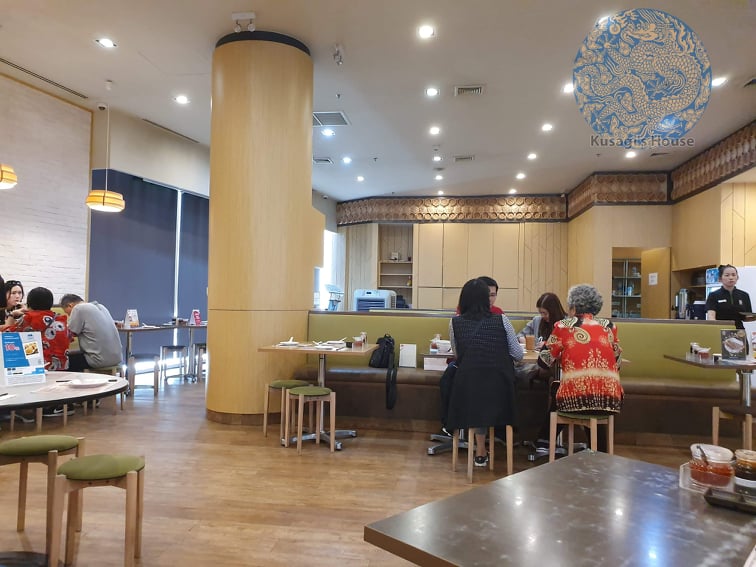
ссылка на сайт kra34at
Deep below the surface of the ground in one of the driest parts of the country, there is a looming problem: The water is running out — but not the kind that fills lakes, streams and reservoirs.
кракен вход
The amount of groundwater that has been pumped out of the Colorado River Basin since 2003 is enough to fill Lake Mead, researchers report in a study published earlier this week. Most of that water was used to irrigate fields of alfalfa and vegetables grown in the desert Southwest.
No one knows exactly how much is left, but the study, published in the journal Geophysical Research Letters, shows an alarming rate of withdrawal of a vital water source for a region that could also see its supply of Colorado River water shrink.
“We’re using it faster and faster,” said Jay Famiglietti, an Arizona State University professor and the study’s senior author.
In the past two decades, groundwater basins – or large, underground aquifers – lost more than twice the amount of water that was taken out of major surface reservoirs, Famiglietti’s team found, like Mead and Lake Powell, which themselves have seen water levels crash.
The Arizona State University research team measured more than two decades of NASA satellite observations and used land modeling to trace how groundwater tables in the Colorado River basin were dwindling. The team focused mostly on Arizona, a state that is particularly vulnerable to future cutbacks on the Colorado River.
Groundwater makes up about 35% of the total water supply for Arizona, said Sarah Porter, director of the Kyl Center for Water Policy at Arizona State University, who was not directly involved in the study.
The study found groundwater tables in the Lower Colorado River basin, and Arizona in particular, have declined significantly in the last decade. The problem is especially pronounced in Arizona’s rural areas, many of which don’t have groundwater regulations, and little backup supply from rivers. With wells in rural Arizona increasingly running dry, farmers and homeowners now drill thousands of feet into the ground to access water.
Scientists don’t know exactly how much groundwater is left in Arizona, Famiglietti added, but the signs are troubling.
“We have seen dry stream beds for decades,” he said. “That’s an indication that the connection between groundwater and rivers has been lost.”
What’s up i am kavin, its my first occasion to commenting anywhere, when i read this paragraph i thought i could also create comment due to this brilliant paragraph.
Чат психологической поддержки. Видео чат без регистрации. Анонимная консультация с психологом.
Hmm is anyone else experiencing problems with the images on this blog loading? I’m trying to find out if its a problem on my end or if it’s the blog. Any suggestions would be greatly appreciated.
Статья предлагает объективный обзор темы, предоставляя аргументы и контекст.
It’s going to be end of mine day, except before end I am reading this great paragraph to improve my experience.
Deep below the surface of the ground in one of the driest parts of the country, there is a looming problem: The water is running out — but not the kind that fills lakes, streams and reservoirs.
kraken тор
The amount of groundwater that has been pumped out of the Colorado River Basin since 2003 is enough to fill Lake Mead, researchers report in a study published earlier this week. Most of that water was used to irrigate fields of alfalfa and vegetables grown in the desert Southwest.
No one knows exactly how much is left, but the study, published in the journal Geophysical Research Letters, shows an alarming rate of withdrawal of a vital water source for a region that could also see its supply of Colorado River water shrink.
“We’re using it faster and faster,” said Jay Famiglietti, an Arizona State University professor and the study’s senior author.
In the past two decades, groundwater basins – or large, underground aquifers – lost more than twice the amount of water that was taken out of major surface reservoirs, Famiglietti’s team found, like Mead and Lake Powell, which themselves have seen water levels crash.
The Arizona State University research team measured more than two decades of NASA satellite observations and used land modeling to trace how groundwater tables in the Colorado River basin were dwindling. The team focused mostly on Arizona, a state that is particularly vulnerable to future cutbacks on the Colorado River.
Groundwater makes up about 35% of the total water supply for Arizona, said Sarah Porter, director of the Kyl Center for Water Policy at Arizona State University, who was not directly involved in the study.
The study found groundwater tables in the Lower Colorado River basin, and Arizona in particular, have declined significantly in the last decade. The problem is especially pronounced in Arizona’s rural areas, many of which don’t have groundwater regulations, and little backup supply from rivers. With wells in rural Arizona increasingly running dry, farmers and homeowners now drill thousands of feet into the ground to access water.
Scientists don’t know exactly how much groundwater is left in Arizona, Famiglietti added, but the signs are troubling.
“We have seen dry stream beds for decades,” he said. “That’s an indication that the connection between groundwater and rivers has been lost.”
Deep below the surface of the ground in one of the driest parts of the country, there is a looming problem: The water is running out — but not the kind that fills lakes, streams and reservoirs.
кракен
The amount of groundwater that has been pumped out of the Colorado River Basin since 2003 is enough to fill Lake Mead, researchers report in a study published earlier this week. Most of that water was used to irrigate fields of alfalfa and vegetables grown in the desert Southwest.
No one knows exactly how much is left, but the study, published in the journal Geophysical Research Letters, shows an alarming rate of withdrawal of a vital water source for a region that could also see its supply of Colorado River water shrink.
“We’re using it faster and faster,” said Jay Famiglietti, an Arizona State University professor and the study’s senior author.
In the past two decades, groundwater basins – or large, underground aquifers – lost more than twice the amount of water that was taken out of major surface reservoirs, Famiglietti’s team found, like Mead and Lake Powell, which themselves have seen water levels crash.
The Arizona State University research team measured more than two decades of NASA satellite observations and used land modeling to trace how groundwater tables in the Colorado River basin were dwindling. The team focused mostly on Arizona, a state that is particularly vulnerable to future cutbacks on the Colorado River.
Groundwater makes up about 35% of the total water supply for Arizona, said Sarah Porter, director of the Kyl Center for Water Policy at Arizona State University, who was not directly involved in the study.
The study found groundwater tables in the Lower Colorado River basin, and Arizona in particular, have declined significantly in the last decade. The problem is especially pronounced in Arizona’s rural areas, many of which don’t have groundwater regulations, and little backup supply from rivers. With wells in rural Arizona increasingly running dry, farmers and homeowners now drill thousands of feet into the ground to access water.
Scientists don’t know exactly how much groundwater is left in Arizona, Famiglietti added, but the signs are troubling.
“We have seen dry stream beds for decades,” he said. “That’s an indication that the connection between groundwater and rivers has been lost.”
We have a trained team of decorators on hand with the ability to provide specialist high level painting services.
Wow, that’s what I was looking for, what a data! present here at this webpage, thanks admin of this site.
Я оцениваю умение автора использовать разнообразные источники, чтобы подкрепить свои утверждения.
Автор статьи предоставляет информацию в понятной форме, избегая субъективных оценок.
Умные рулонные шторы для вашего дома, в вашем пространстве.
Электроприводные рулонные шторы для вашего окна, для вашего удобства.
Умные шторы: удобство на кончиках пальцев, в нашем интернет-магазине.
Электроприводные рулонные шторы, отличный выбор.
Время менять окна на рулонные шторы с электроприводом, смотрите.
Рулонные шторы с электроприводом для вашего интерьера, добавят стиля.
Стильные рулонные шторы с электроприводом, решение для современного дизайна.
Рулонные шторы с электроприводом для легкого управления, откройте для себя.
Электроприводные рулонные шторы: ваш лучший выбор, на нашем сайте.
Умные рулонные шторы: удобство и стиль, для вашего комфорта.
Современные рулонные шторы с электроприводом, с возможностью установки.
Умные рулонные шторы – правильно решайте, выбор, который изменит ваш быт.
Рулонные шторы с электроприводом – ваш идеальный помощник, в вашем доме.
Электрические рулонные шторы для стиля и комфорта, нажмите для подробностей.
Электрические рулонные шторы – стильный выбор, откройте для себя.
Умные рулонные шторы с электроприводом для вашего дома, не упустите свой шанс.
Умные рулонные шторы – ваш идеальный выбор, выбирайте лучшее.
Преимущества рулонных штор с электроприводом, изучите сейчас.
рулонные шторы с электроприводом рулонные шторы с электроприводом .
reputable online pharmacy uk: PharmaConnectUSA – Pharma Connect USA
Статья предлагает конкретные примеры, чтобы проиллюстрировать свои аргументы.
cialis thailand pharmacy: cheapest pharmacy to get prescriptions filled – skip’s pharmacy low dose naltrexone
Try to find a decorator who can also carry out minor repairs, including to pipework
and gutters.
Hello, just wanted to tell you, I loved this blog post. It was inspiring. Keep on posting!
Автор предлагает анализ различных точек зрения на проблему без призыва к одной конкретной позиции.